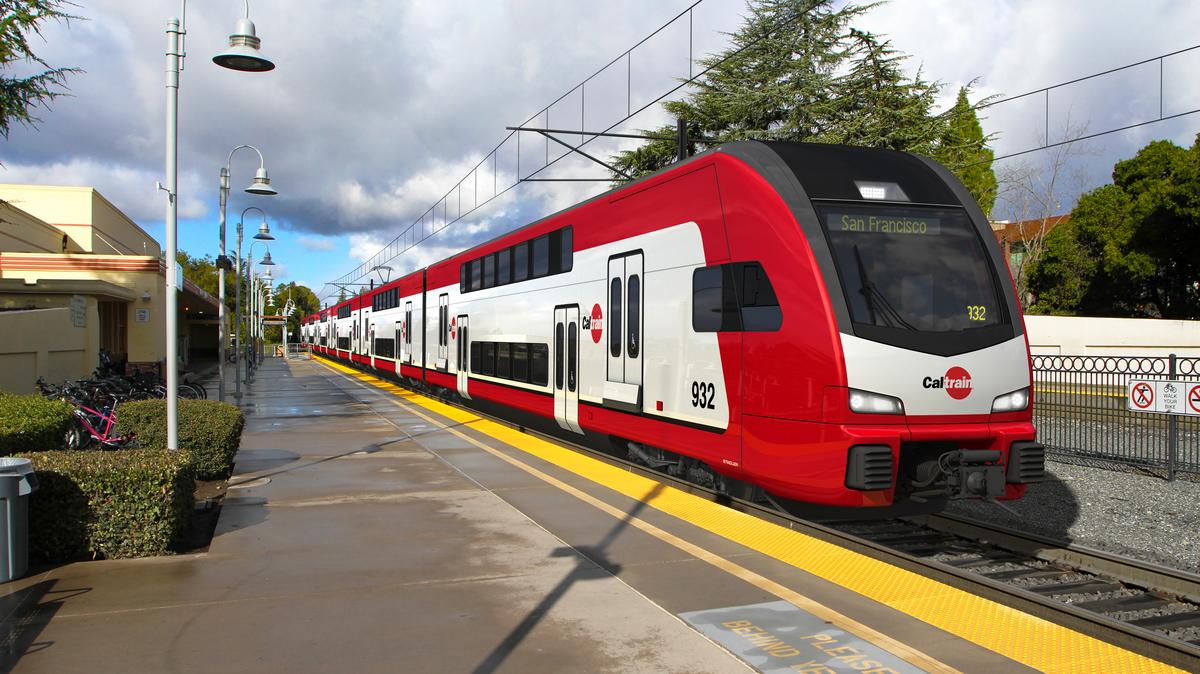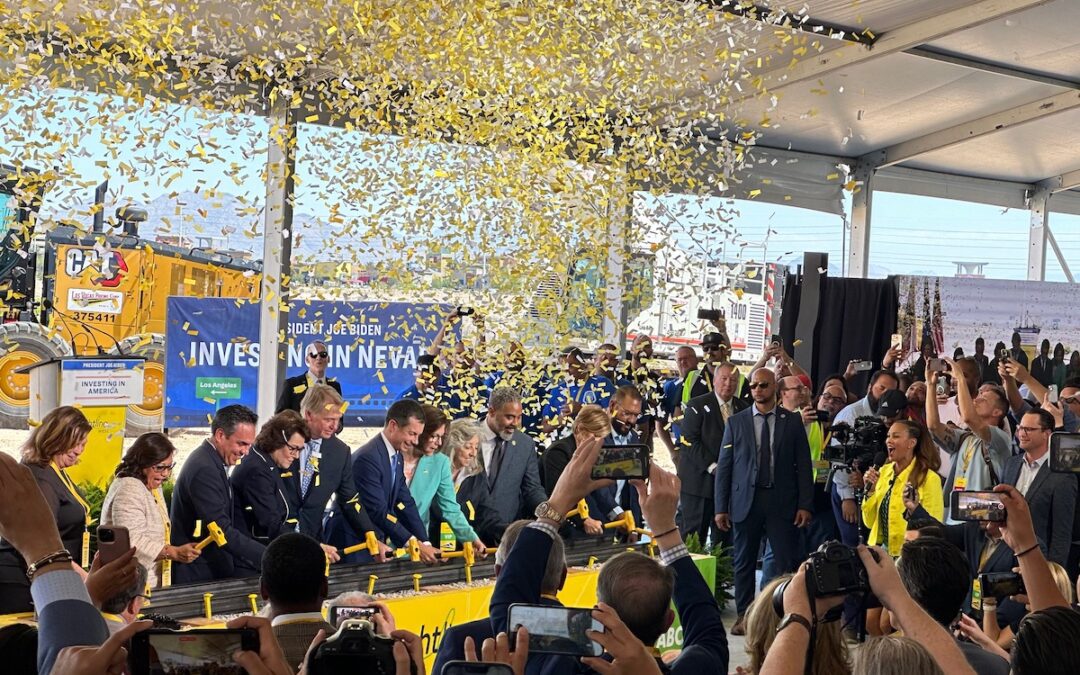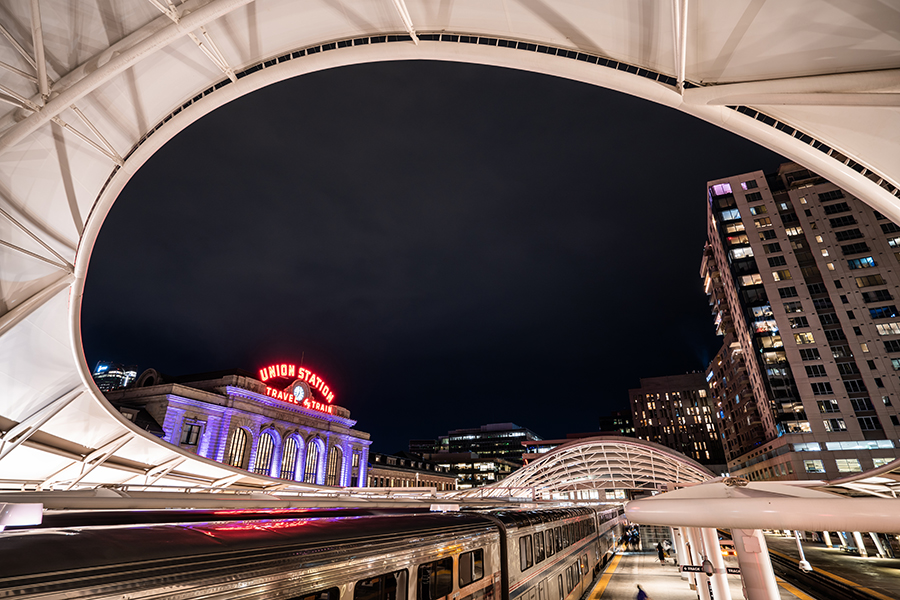The railroad Brightline today broke ground in Nevada on its new Brightline West project. Brightline will use trains traveling up to 200 miles per hour to cut the travel time between Las Vegas and Los Angeles in half. The company already operates successful trains...
Caltrain expands service to highest level ever, reaffirms commitment to building world-class regional express rail system
This week, Silicon Valley’s commuter-rail system—Caltrain—added service that exceeds its pre-pandemic levels. It now offers 104 trains each weekday and three kinds of service: local trains; express trains, which make only selected stops and run during peak hours; and limited-express trains that run during mid-day hours.
During peak commuting hours, trains will run every 15 minutes.
It’s hard to overstate how important and forward-thinking Caltrain’s moves are at a time when many commuter-rail systems are slashing rather than expanding their services. (Notably and encouragingly, though, Chicago’s commuter service recently took a step toward the Caltrain model by implementing service every half-hour, at minimum, throughout the entire working day on its UP-N line.)
These moves are critically important for at least two reasons.
First, Caltrain is in the midst of a modernization project that will make it the gold standard of U.S. commuter-rail systems (as HSRA has noted before). Its expanded service shows a strong and enduring commitment to that ambition. When the upgrades are completed, Caltrain (which runs from San Francisco to Gilroy) will be a world-class regional express rail (RER) network that offers frequent service throughout the day; electrified trains that run up 110 mph; grade-separated crossings; and state-of-the-art-stations. (RER refers to the new generation of commuter-rail lines, offering more frequent service and faster trains than older systems.)
Second, the fate of California’s San Francisco to L.A. high-speed rail project is closely connected with Caltrain’s fate—and vice versa.
California has a detailed vision and long-range plan (to 2040) that guides its transportation investments. The Caltrain upgrades are happening, in part, based on a projected ridership boost from the high-speed line. And they’re being made in part with HSR funding. Which means that Caltrain and California HSR are a prime example of HSRA’s integrated-network approach, in which high-speed rail and commuter rail are inseparable elements of a big-picture transportation system.
Improving one improves the others. And you maximize the value of each asset in the system—high-speed trains, passenger trains, commuter-rail and bus lines—by not only investing in them but tightly coordinating their operations.
Leading the way
To be clear: Caltrain is far from exempt from the effects of the pandemic. Its ridership numbers are still significantly below pre-pandemic levels.
The most recent survey (taken in October and November 2020) found that the number of riders who use Caltrain every weekday declined from 53 percent in 2019 to 43 percent in 2020. Twice as many people rode less frequently rather than more frequently—32 percent versus 15 percent—from 2019 to 2020. And nearly one-fourth of riders used Caltrain just 3 days per month or less in 2020. That was true of only 8 percent of riders in 2019.
Other notable findings: The use of Caltrain for recreational and social trips more than doubled from 2019 to 2020—from 9 percent to 20 percent. The average household income or riders declined in that timeframe—from $158,000 to $95,000. And the average age rose slightly, from 36 to 38.
Those numbers likely reflect the large number of relatively young and affluent tech workers in Silicon Valley who have been able to work from home and mostly stopped commuting to the office.
Whether those workers will return after the pandemic is still unclear. A summer 2020 survey by Caltrain found that just 1 percent of respondents said they wouldn’t return to the service—but a third said they would ride it less. In addition to expanding its services, Caltrain is cutting its fares by half in September to lure back some of those riders.
However things play out, it’s certain that Caltrain is demonstrating a strong commitment to transforming itself into a new kind of commuter-rail service.
In doing that, it’s also creating the first model in the U.S. of what a world-class RER system looks like: It offers frequent service and is easily accessible throughout the day—not just during morning and evening rush hours. And it’s used by all kinds of people, taking all kinds of trips, to places all across whole cities and regions—not just to downtown business districts and bedroom communities.
Which is exactly the kind of commuter-rail system that a vibrant HSR system depends on, and can flourish alongside.
The Latest from HSRA
Our Latest Blog Posts
Check out the latest news, updates, and high speed rail insights from our blog!




